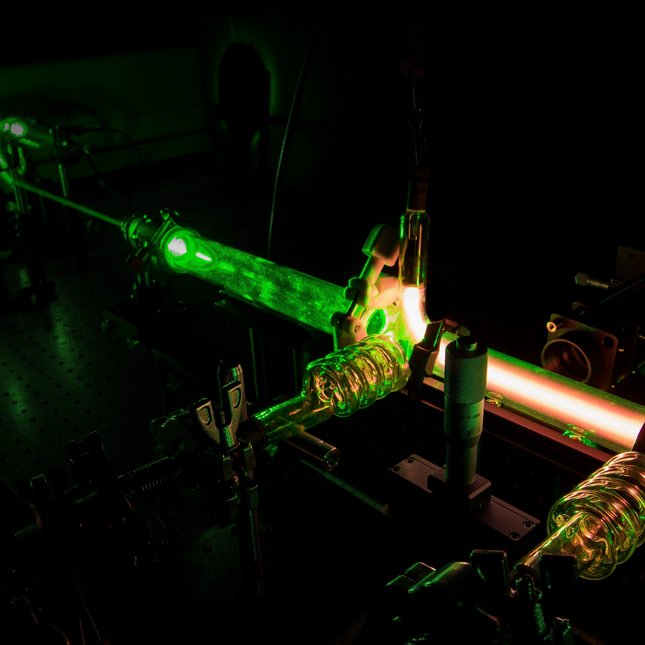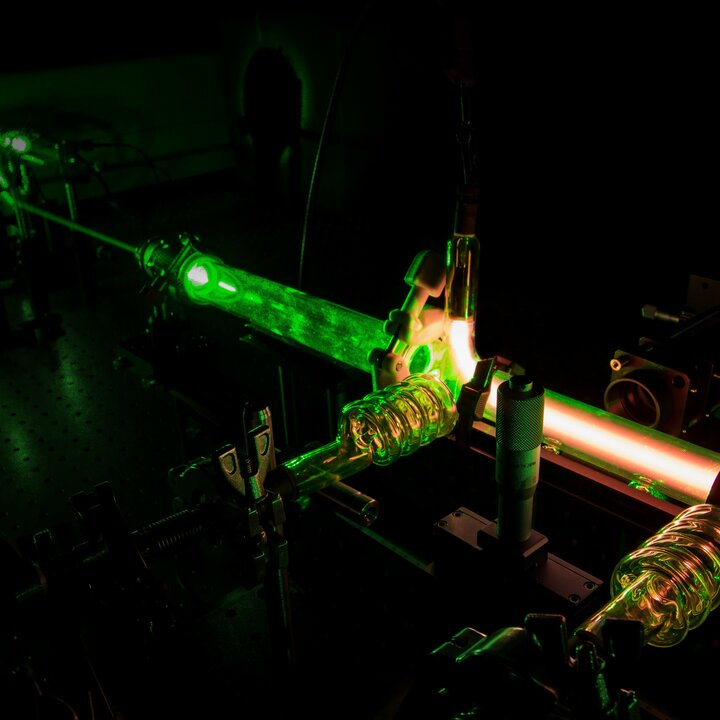
By capturing CO2 and using renewable energy to recycle it into hydrocarbon fuels, both CO2 emission is reduced and a solution to intermittent availability of renewable energies is offered. The goal of our research within the ‘CO2 neutral fuels’-research theme is to develop a process that converts CO2 and water to a hydrocarbon fuel in such an efficient way that it becomes economically viable. Our present research focuses on a fundamental understanding of the most energy costly step in this process: CO2-to-CO dissociation, and in particular the role of vibrational excitation in the disassociation of the CO2 molecule. In parallel to this experimental approach, we also model the temporal development of the concentrations of plasma species during the discharge. At a later stage, we will study the plasma chemistry of the direct conversion of gas mixtures containing CO2 to a fuel.
The CO2 recycling process is based on a closed-loop cycle, first reducing the captured CO2 to CO, which is then converted to fuel using the industrially well-established Fischer-Tropsch process. The fuel in which the renewable energy is stored matches well to our present energy infrastructure. A promising candidate to reduce the CO2 to CO efficiently in both gas and energy is non-equilibrium plasma. To prove this we characterize the non-equilibrium plasma using optical diagnostics. These diagnostics allow us to gain a better understanding of the reaction mechanisms and to reveal pitfalls that hamper conversion efficiency. The acquired knowledge will give valuable feedback for the design of new plasma sources that allow for gas processing at industrial scale.
By capturing CO2 and using renewable energy to recycle it into hydrocarbon fuels, both CO2 emission is reduced and a solution to intermittent availability of renewable energies is offered. The goal of our research within the ‘CO2 neutral fuels’-research theme is to develop a process that converts CO2 and water to a hydrocarbon fuel in such an efficient way that it becomes economically viable. Our present research focuses on a fundamental understanding of the most energy costly step in this process: CO2-to-CO dissociation, and in particular the role of vibrational excitation in the disassociation of the CO2 molecule. In parallel to this experimental approach, we also model the temporal development of the concentrations of plasma species during the discharge. At a later stage, we will study the plasma chemistry of the direct conversion of gas mixtures containing CO2 to a fuel.
The CO2 recycling process is based on a closed-loop cycle, first reducing the captured CO2 to CO, which is then converted to fuel using the industrially well-established Fischer-Tropsch process. The fuel in which the renewable energy is stored matches well to our present energy infrastructure. A promising candidate to reduce the CO2 to CO efficiently in both gas and energy is non-equilibrium plasma. To prove this we characterize the non-equilibrium plasma using optical diagnostics. These diagnostics allow us to gain a better understanding of the reaction mechanisms and to reveal pitfalls that hamper conversion efficiency. The acquired knowledge will give valuable feedback for the design of new plasma sources that allow for gas processing at industrial scale.
